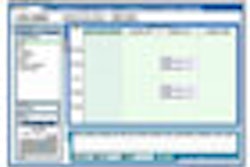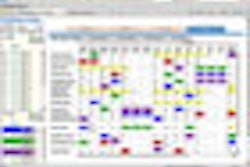Five years ago, Riverview Hospital in Noblesville, IN, had reached a crossroads.
The 170-bed standalone facility was facing stiff competition from three major hospitals within 15 miles. Its existing information technology was adequate at the time, but far from the capabilities that would be needed to provide quality care and foster patient satisfaction into the future to maintain an edge over the nearby facilities.
That's when the self-funded, county-owned facility embarked on a concerted plan to transform itself into a state-of-the-art IT healthcare operation that connected the hospital itself, as well as its 20 owned physician practices, two remote rehabilitation facilities and four immediate care clinics in the community.
"While Riverview was a bit backward in information technology, it was very forward-thinking in its high-touch, high-care approach and very advanced in the technologies to deliver healthcare," said Randy Cox, Riverview's chief information officer (CIO). "We wanted to weave information technology into that process and increase our quality of care."
Seamless network
One of the biggest challenges for the IT staff was making the information easily accessible to all its caregivers in the hospital and the community.
"Our biggest initial investment was to create a seamless network between all our sites," Cox said in a presentation at the 2008 Healthcare Information and Management Systems Society (HIMSS) meeting. "If you want to transform an organization, one of your greatest barriers is access. We set out to remove access barriers throughout our organization."
At the time, Riverview used its IT system primarily for basic file sharing and e-mail. But when Cox took the CIO job in 2002, e-mail could be accessed only by about 40 managers. It was almost considered a privilege to have e-mail. The policy was changed early in the IT transformation to give physicians, nurses, and other hospital staff the ability to communicate freely, share information, and get a feel for the advantages and potential of a network.
Riverview also created a project management office to help guide the process of building its IT infrastructure. Over a period of three years, the hospital replaced its network by upgrading its original system and building upon its initial IT capital investment.
Overwhelming response
The response from Riverview's nurses, clinicians, and physicians was instantaneous and enthusiastic -- overwhelming the new network. "We were victims of our own success," Cox recalled. "We implemented so many systems at such a pace and there was so much interest in the data that we began to bog down the network. We had to move to a more stable and robust network."
He emphasized that when transforming a network, having an architecture that is scalable will help keep people satisfied and keep the momentum for the project going.
To ensure that its vendor choices for the project were correct, Riverview created a priority list. Among the criteria was a vendor's ability to deliver the appropriate architecture for the IT system. Riverview asked questions about the database structure, messaging capabilities, open standards, and integration with other ancillary technologies to ensure future flexibility and compatibility.
Payments to vendors were based, in part, on milestone criteria authored by the clinicians throughout the organization. Riverview's physicians and nurses crafted an eight-page, detailed list of their expectations for the IT system and how it would help serve the hospital's patients. The clinicians developed different scenarios, such as the path a patient would take from the time he or she entered the emergency room to admission and beyond.
"They demanded the computer system help them manage all of the tasks and workflow needed to ensure a high level of care," Cox said. "Once the computer system had achieved that flow and delivered that value, that was a milestone. Payments were tied throughout the contract to milestones, which weren't directly in control of the vendor."
Physician participation
Another measure of success was the frequency with which its physicians used the network. Riverview does not require its doctors within the facility or the community to participate, but over the last 18 months, physician utilization increased from 10% to 85%. Remote access to patients files from outside the facility, such as the doctor's home or office, increased from 2% to 50% in the last 12 months. "By the end of this year," Cox added, "we will be nearly 100% on both those measures."
Fortunately for Riverview's IT staff, the project had the full support of the hospital's board, which placed no budget parameters on the transformation. Because of Riverview's success within the community it served, the hospital had the financial resources to cover the initiative with its own general revenues.
To replace the existing IT system, Riverview spent approximately $8 million. The figure includes the enterprise resource planning system from Microsoft of Redmond, WA; computerized patient record technology from Misys Healthcare Systems of Atlanta, which provides clinical decision support and the foundation for the coming computerized physician order entry; and the revenue cycle management system from Keane's Healthcare Solutions Division of Melville, NY.
As the transformation proceeds toward 2010, Riverview plans to venture into newer technologies that haven't quite matured. Implementation of computerized nursing documentation and computerized physician order entry are two targets for implementation in the next two years.
By Wayne Forrest
AuntMinnie.com staff writer
April 2, 2008
Related Reading
MGH/Brigham system moves briskly toward 100% EMR adoption, March 3, 2008
National IT standards need to be locally controlled, February 26, 2008
HIMSS survey: EMR tops healthcare IT plans, February 25, 2008
Integrating disparate systems key to EHR deployment, February 14, 2006
Copyright © 2008 AuntMinnie.com



















